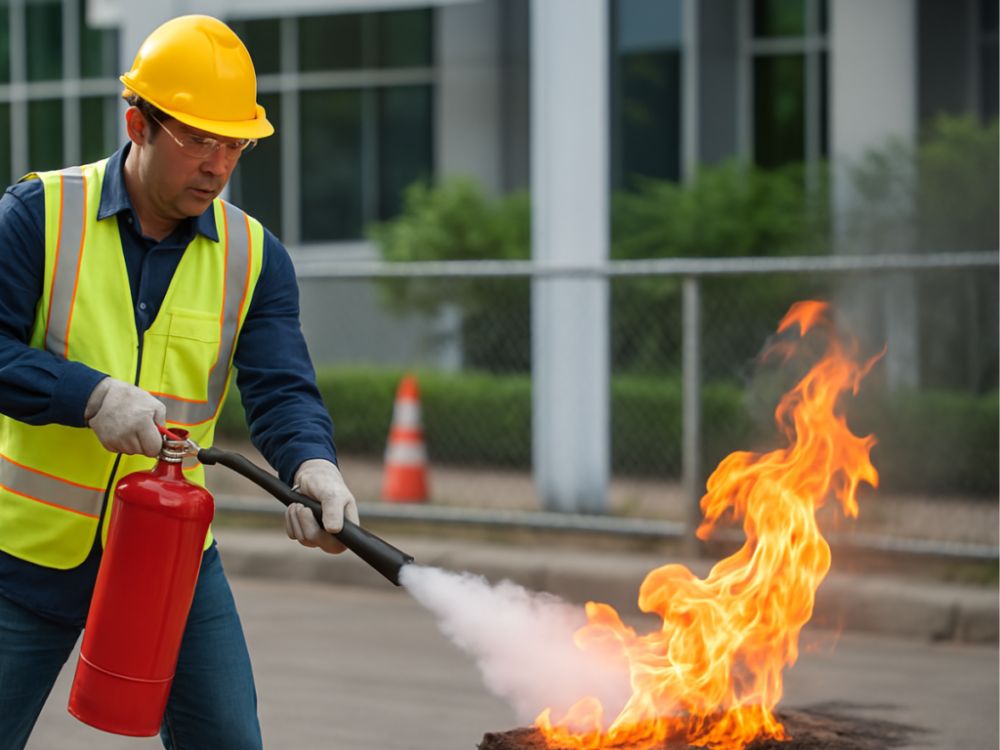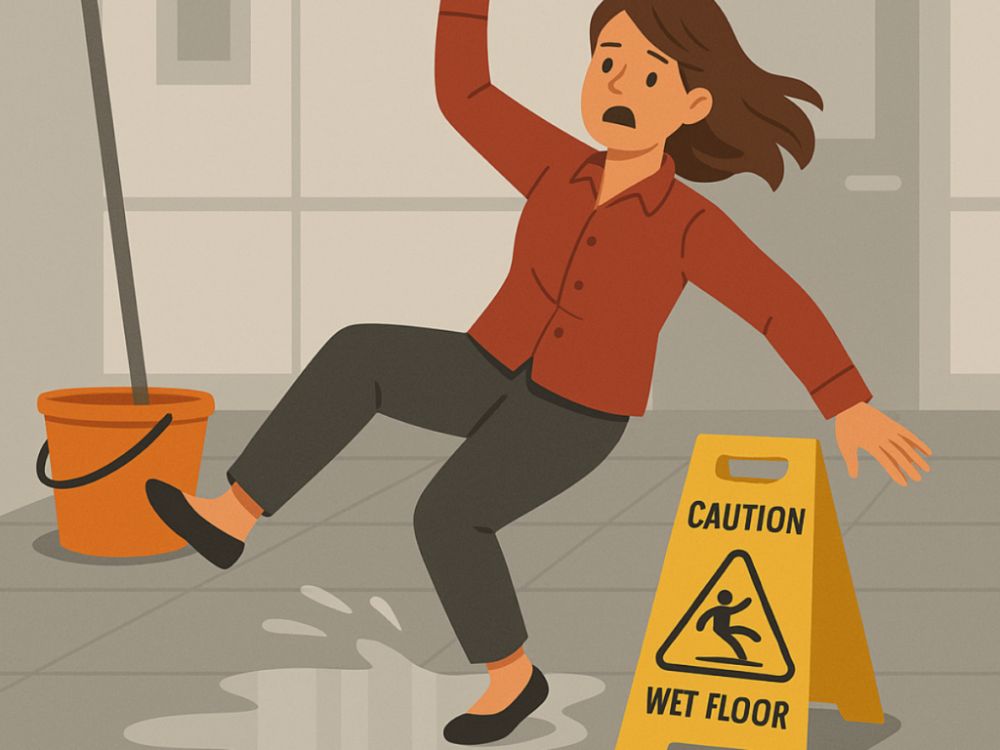Do you know what workplace safety is? Are you aware of its significance? For anyone in the workplace, it is a legal necessity and also a commitment on the part of the business owners. No matter what kind of workplace you are working in, many hazards associated with it. Although every workplace has set safety standards and placed safety signs all around the place, there are still chances of injuries and accidents. It usually happens when employees overlook practices, forget the facts, or stay uninformed. A workplace safety quiz with answers online can help you learn more.
This article has a comprehensive workplace safety quiz with answers. You can test your knowledge related to workplace safety. Using the results, it is possible to improve your proficiency in workplace safety measures further and learn from real-life scenarios. Whether you’re an employee looking to improve your awareness or a safety manager aiming to boost team compliance, this guide is for you.
Importance of Workplace Safety Matters

Workplace safety is the sum of different factors, including behavior, policy matters, and even precautions that are necessary to lower the risks of injury, illness, and other accidents happening in the workplace. It refers to any kind of harm ranging from minor physical injuries to psychological implications. It also includes ergonomics and emergency preparedness.
The International Labor Organization (ILO) says that every year, over 2.3 million people worldwide die due to work-related accidents or diseases. There were 2.8 million nonfatal injuries in workplaces across the US in 2022. This shows the increasing need of learning, knowing and finding out all about workplace safety. Workplace accidents can end up in the following ways:
- Physical injuries
- Long-term health conditions
- Emotional trauma
- Financial losses
Legal Consequences for Employers
The employee and the employer are equally responsible for the safety. Employers must provide training, safety gear, and safe infrastructure. On the other hand, the workers must follow protocols, report hazards, and act responsibly. A safe workplace builds up morale and increases productivity. It is also essential for building trust and strengthening the organization’s reputation.
In addition to individual satisfaction, following the safety rules can reduce many financial and legal liabilities in the future.
Can Workplace Safety Quiz Help?
There is no question about the significance of workplace safety quizzes, especially when you get to use a workplace safety quiz with answers. As it is for other learning areas, in learning safety in the workplace, passive learning has little role to play. Therefore, using quizzes can be helpful. The quizzes keep the brain busy and change the dull and conventional learning sessions into something interactive, leaving behind memorable experiences.
Benefits of safety quizzes:
- Engagement: Interactive questions increase attention and participation.
- Retention: Testing reinforces memory far more effectively than passive reading.
- Assessment: Quizzes highlight individual and group strengths and weaknesses.
- Feedback: Immediate answers help clarify misconceptions.
- Self-paced learning: Employees can redo the test whenever they are convenient.
Safety managers can use the quizzes from during training sessions to assess the performance of those being trained. On the other hand, if you are an individual, the quizzes help you gain the confidence and readiness that are necessary to handle emergency situations. Adding other activities like team daily challenges or leaderboards can further help in gaining motivation.
Most Asked Questions in Workplace Safety Quiz with Answers

Now that you know about the safety quiz and its significance, it is time to check how much you are aware of workplace safety measures. Scroll down and try giving the answers. Match the answers with the correct ones and then check your score. It will let you know how well you are doing.
1. What is the first thing that you will do if you see a fire starting in the workplace?
A. Try putting it out yourself
B. Call your manager
C. Sound the fire alarm
D. Finish your work before evacuating
Answer: C. Sound the fire alarm
2. When do you need a Personal Protective Equipment (PPE)?
A. Only when you feel unsafe
B. Only during inspections
C. Whenever a task requires it
D. Never
Answer: C. Whenever a task requires it
3. How to lift heavy objects?
A. With your back bent
B. With your knees bent and back straight
C. Quickly, to get it over with
D. Ask someone else to do it
Answer: B. With your knees bent and back straight
4. How to handle a spilled chemical?
A. Clean it up immediately
B. Inform your coworker
C. Follow your company’s spill response protocol
D. Ignore it
Answer: C. Follow your company’s spill response protocol
5. What is the best practice for electrical safety?
A. Touch wires with bare hands
B. Unplug devices by pulling the cord
C. Use equipment with exposed wires
D. Inspect cords regularly and report damage
Answer: D. Inspect cords regularly and report damage
6. How often should we have fire drills?
A. Never
B. Once every few years
C. Regularly, as per company policy
D. Only after a real fire incident
Answer: C. Regularly, as per company policy
7. Who has to report safety hazards?
A. Only managers
B. Only the safety officer
C. Every employee
D. External auditors
Answer: C. Every employee
8. What to do if the floor is wet?
A. Walk carefully over it
B. Call housekeeping
C. Report it and put up a caution sign
D. Ignore it
Answer: C. Report it and put up a caution sign
9. What type of fire extinguisher is good for electrical fires?
A. Water
B. Foam
C. CO2
D. Wet Chemical
Answer: C. CO2
10. What is the right time to report an injury at work?
A. Only if it’s serious
B. Immediately
C. At the end of the week
D. Only if your manager asks
Answer: B. Immediately
11. What is the best possible way to reduce the dangers of repetitive strain injuries (RSIs)?
A. Use heavy equipment instead
B. Take regular breaks and stretch
C. Work as fast as possible
D. Ignore minor discomfort
Answer: B. Take regular breaks and stretch
12. What should you do if a machine starts malfunctioning during use?
A. Try to fix it yourself
B. Ignore it and continue working
C. Shut it down and report immediately
D. Wait for someone else to notice
Answer: C. Shut it down and report immediately
13. What shows that a worker is suffering from heat exhaustion at work?
A. Increased appetite
B. Cold and dry skin
C. Dizziness and sweating
D. Hyperactivity
Answer: C. Dizziness and sweating
14. Which of the options is correct for emergency exits?
A. They can be locked for safety reasons
B. They should always be accessible and unblocked
C. Only security can use them
D. They are optional for small offices
Answer: B. They should always be accessible and unblocked
15. What promotes a safer workplace culture?
A. Competing to finish tasks fastest
B. Reporting every minor safety concern
C. Ignoring safety to save time
D. Assuming someone else will report hazards
Answer: B. Reporting every minor safety concern
What Do Quiz Scores Show?
Now, when you have completed the quiz, check the answers, score yourself, and see how much you know about workplace safety:
- 0–5 correct: Safety Rookie – Time for a refresher. Review your training.
- 6–10 correct: Safety Learner – Good effort, but there’s room to improve.
- 11–13 correct: Safety Aware – You have solid knowledge. Keep practicing.
- 14–15 correct: Safety Pro – Excellent! You’re a safety champion.
What Can I Do to Improve My Workplace Security Knowledge?
Now that the scores are here and you have found out how much you lack regarding workplace safety knowledge, it’s time to step ahead and make a little effort. It is not a hard thing to manage. Just a few considerations and you are there.
- Do not ignore the company-organized sessions. Participate actively in the sessions by asking questions.
- Stay informed about the safety protocols and other emergency procedures.
- Learn how to use the safety gadgets and equipment like gloves, helmets and goggles.
- If you notice any safety breach, bring it to the notice of the concerned authorities.
- Be part of the drills and activities. They will let you stay prepared for any unforeseen.
- Share real-life experiences with your team members.
- Keep checking the safety posters and signs regularly.
- Lead by example. Show proper behavior to inspire others.
- Encourage safety discussions as a part of daily practice.
- Rewarding vigilant members is a great step indeed.
Making safety a daily habit builds a stronger, more secure environment for everyone.
Real-Life Workplace Safety Scenarios

Scenario 1:
Slippery Floor Incident
An office worker walked through a hallway that had just been mopped. There was no wet floor sign. She slipped, injuring her back.
Lesson: Always use proper signage and report missing warning signs immediately.
Scenario 2: Improper Chemical Storage
In a lab, chemicals were stored without labels and close to incompatible substances. This led to a minor reaction and evacuation.
Lesson: Always label chemicals and store them as per safety data sheets.
Scenario 3: Electrical Overload
A power strip was used to plug in multiple high-wattage devices, causing a short circuit and a small fire.
Lesson: Never overload outlets. Use equipment as per electrical load limits.
Scenario 4: Ignored Back Pain
A warehouse employee ignored recurring back pain while lifting boxes improperly. Over time, this developed into a chronic injury.
Lesson: Follow proper lifting techniques and report pain early.
Each of these examples shows how preventable most incidents are with awareness and action. Using case studies like these in meetings or training sessions can personalize the importance of safety.
How to Build a Culture of Workplace Safety?
A safety-first mindset doesn’t develop overnight. It requires consistent communication, supportive leadership, and employee involvement. Here are key elements to build a safety culture:
- Managers must walk the talk and lead by example.
- Policies, procedures, and expectations must be clearly conveyed.
- Celebrate safe behaviors and milestones.
- Review safety metrics, conduct audits, and act on feedback.
Conclusion
Workplace safety is everyone’s responsibility. Whether you passed the quiz with flying colors or discovered areas needing improvement, the key takeaway is simple: never stop learning. By staying aware, following procedures, and encouraging others to do the same, we create not just a safer workplace but a more supportive and productive one, too.
Retake the quiz later to test your retention, and don’t forget to share this with your team. Together, we can make safety second nature.
FAQ
1. Who should take this workplace safety quiz?
Everyone! Whether you’re an intern or a senior manager, safety affects all employees.
2. How often should I take safety quizzes?
Ideally, after every major training or at least quarterly for review.
3. Can this quiz be customized for my industry?
Yes. Questions can be tailored to match industry-specific hazards (construction, healthcare, etc.).
4. What if I failed the quiz?
Use it as a learning tool. Review the explanations, revisit training materials, and try again.



